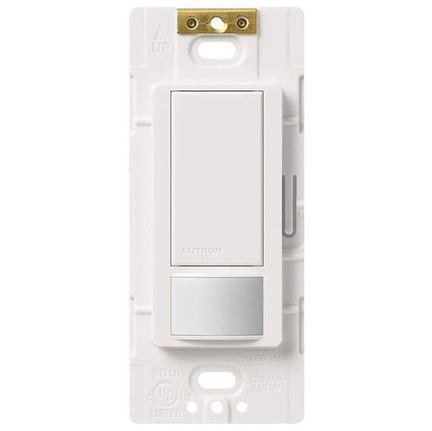Ron Stultz
"Lutron Maestro Motion Sensor Switch, 3-Way: Additional Install Tips"

Summary: In 3 way install, shut off power and open 3-way switch that is going to remain in circuit. Do this first as have to modify wiring at this switch anyway and opening will tell you traveler wire colors for switch to be replaced with a Maestro.
Background:
When I moved, new house needed motion sensing in closets and on stairs.
In all cases, 3 way installs.
Made mistake initially, not seeing that the 3-way switch that I was going to leave in the circuit, had to be wiring modified and this resulted in incorrect 3-way circuit operation (Maestro would turn on lights at motion but 3-way switch at other end would not turn on lights as desired).
Reveal 3-Way Switch that is Going to Remain, FIRST:
Cut power and reveal 3 way switch that is going to remain in circuit, first.
With switch out of box, observe which wires are the "travelers" as they will be attached to same color screws. Write down traveler wire colors.
Most likely, the "traveler" wires will be part of a 3-way cable or one with a red, a white and a black wire in it.
Go ahead and modify the wiring of the 3-way switch as defined by the Maestro install instructions.
Small Room:
In one install, I had a very small room with a 3-way installation.
Rather than completely remove the second switch from the circuit, I left it in.
In this case, because the Maestro sense motion for the entire room, the second switch does nothing and should have been aborted and Maestro installed in a non-3-way manner.
Install Maestro Switch:
With which wires are the "travelers" identified already, install the Maestro switch.
Note: looking at instructions, understand there are 2 black wires with one located at bottom and one at top. Make sure you make the correct connection to the black wire at the bottom of the switch.
Normal Operation:
Normal operation is when the Maestro senses motion, a relay clicks and the light turn "on".
The light will remain "on" for the duration of switch programming...so many minutes.
While the light is "on" if the second switch in the circuit is switched, the Maestro switch relay clicks and the light will turn "off".
If the second switch in the circuit is turned "on" the light will come "on".
In other words, a Maestro switch, when wired correctly, operates the light like any other 3-way circuit.